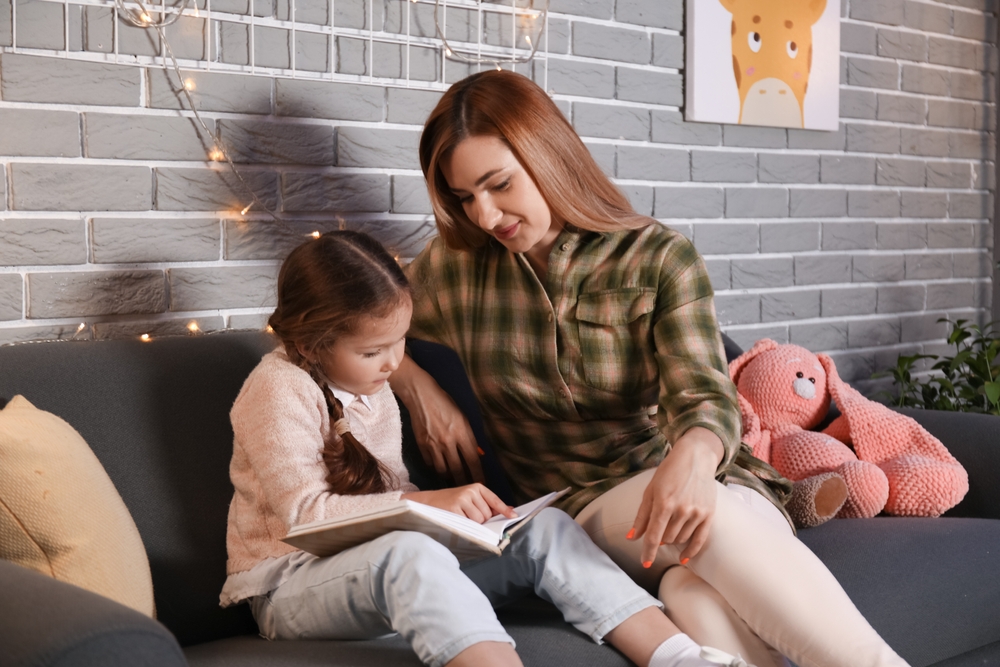
States are at war with lagging test scores for reading and math. The pandemic widened learning gaps and many children fell further behind expected grade-level benchmarks. While the impact of the pandemic and distance learning cannot be ignored, there also was another more pervasive issue as it related to the reading curriculum in public schools.
Through the years, teachers and boards of education in many states pivoted literacy curriculum to explore new methodologies for teaching students how to read. Phonics instruction took a back seat to helping children embrace a passion for reading. The problem? Love didn’t always translate to fluency.
The most recent test score data published via the Nation’s Report Card reveals that only one out of three fourth-graders read at a proficient or higher level. The reality is that the rest of the country’s children aren’t proficient. What happened and what is the solution? Enter the Science of Reading.
Is Literacy Instruction a Science?
The Science of Reading is a term given to a type of instruction that focuses on the core concepts needed for an individual to learn how to read fluently. This instruction does not focus on warm and fuzzy feelings; instead, it is very much a back-to-basics approach.
Phonics is at the core of the Science of Reading. Phonics focuses on letters, their sounds, patterns, blends, and how all these sounds and functionalities create a word. Teachers discovered that children need to learn how to crack the code of reading in order to read fluently. The realization that children must learn the alphabet and its sounds might seem obvious to older generations, but, for years, many children have learned to read using a very different approach.
Some children embraced the ‘love of reading’ approach to instruction. However, for children who struggle with decoding, with the sounds of letters, with letter identification and patterns, this type of modern literacy instruction only resulted in a greater struggle.
The modern approach to literacy taught children—at times—to guess the word based on picture clues. Children didn’t learn to decode; they didn’t learn to properly sound out tough words. Instead, they learned that pictures could tell them the words. Unfortunately, a picture is worth 1,000 words, and 999 of them are incorrect.
As reading scores lagged, the reality set in that this type of instruction didn’t work, wasn’t working and was failing many, many children. The insult to the already injurious flailing literacy scores was that one of the widely-used programs for struggling readers also wasn’t even successful. The Reading Recovery program resulted in its participants scoring worse on reading tests (in third and fourth grade) than children who didn’t use the program. A reading intervention program failed to intervene and help the children it was designed to move forward.

Are All States Focusing on the Science of Reading?
Many states have moved to embrace a phonics-fueled reading curriculum and are on board with the Science of Reading. Parents who are interested in learning their state’s position related to the reading curriculum should visit the Department of Education website in their state. In addition, individual school districts are transparent with curriculum directives.
Parents of children in private schools can explore their school’s curriculum, too. However, private schools have their own curriculum, directives and goals. Many private schools could already utilize a science-based approach to reading. Private schools also might focus more on vocabulary lists, spelling tests and other core concepts that some public schools might have dropped from their lessons.

Can Parents Teach the Science of Reading at Home?
Teaching the ‘Science of Reading’ does not require parents to have a specialized degree in education. While teachers utilize formal lesson-based approaches when guiding students on their reading journey, parents might choose to focus on helping their child gain a mastery of the basics of the code of reading: the alphabet.
Teach children the alphabet at a young age. Sing the alphabet song. Make cards with each letter and play match games to help children identify each letter. Help children understand the sound that each letter says.
Back in the 1970s or early 1980s, PBS stations broadcasted a children’s show called The Letter People. Each character was a letter of the alphabet, and each character had a special song, sound and personality (that matched their letter sound). The vowels of the alphabet were all the ‘girl’ characters. There was Miss I (with an itchy itch), Miss A (A’Choo), etc. The songs for each character are available via Last FM, and YouTube offers a few episodes.
Read Together
Read together with children often. Reading together offers time to bond with children; it also helps parents understand if their child is struggling with sounds or reading fluency. Give children the opportunity to choose the books they want to read; talk about the story and ask questions about the story, too.
Teach Proper Spelling
Many schools no longer focus on spelling tests. The skill-and-drill memorization of spelling words was dropped years ago by many districts. Instead, students are expected to identify words in context to ascertain if they are spelled correctly.
Parents can teach spelling and help children better understand patterns in words. These patterns are not simply helpful for learning to sound out words, but learning the patterns teaches children to spell properly, too. Bring back the old teaching rhymes like “I before E except after C or when sounding like A as in neighbor and weigh.”
Discourage Guessing
When children struggle to say or read a word, help them sound out the letters and put them together to create the word. Do not encourage them to look at a picture to guess the word. Helping children master the code of reading provides them with the fundamental skills for reading. Not all books will have pictures that children can use for clues; sometimes these pictures are not even beneficial.
Use a Reading App
If children seem to struggle with decoding or with reading comprehension, use a reading app to help them gain confidence and proficiency. Readability can be used by children in kindergarten through sixth grade.
The program includes a built-in guided reading tutor powered by AI and programmed with voice-recognition software. Readability is designed as a leveled-based program; children start the program at one reading level below their current level. When they log into Readability, they have access to a library of books at their level. Children open a book of their choice and read the story aloud.
As the child reads aloud, the tutor learns their unique voice. The tutor understands when the child needs help; the tutor also provides encouragement and feedback. In addition, the tutor also collects reading data. The tutor listens and calculates the child’s reading fluency; this denotes the number of words read per minute (less any mistakes). At the end of each book, the tutor asks the child questions to gauge comprehension mastery.
Children advance to a more difficult reading level once they display mastery of both reading fluency and comprehension. Parents have access to a private portal in the program that allows them to view all the child’s reading data, including their current reading level, reading fluency, and comprehension mastery.
Parents might be unsure if Readability is appropriate for their child. Sign up for a free seven-day trial to explore it. Children have access to all the program’s features during this trial period. After seven days, parents can sign up for a monthly subscription for $19.99 (per month). Each subscription can be used by up to three children. Explore Readability today and sign up for a trial to understand how the program can help struggling readers gain proficiency.

 Español
Español